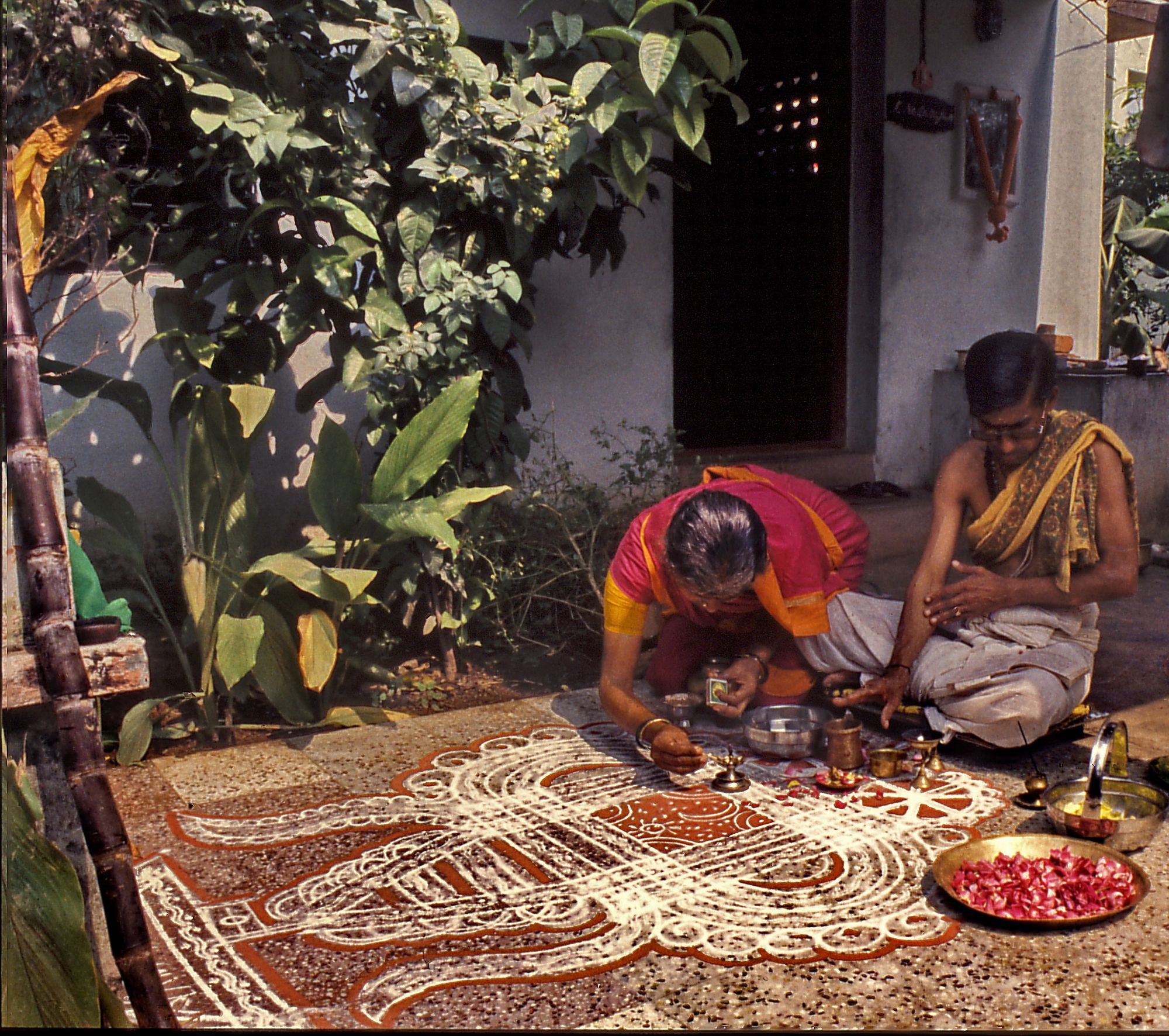Inspiring women "Subhadra Natarajan"
A lotus with eight petals in a circle welcomes two feet dedicated to Râma. Each petal bears a word from the mantra “Jaya, Jaya Râma, Sri Râma, Jaya Râma”. According to her, this kolam is equivalent to the invocation of the divine name.
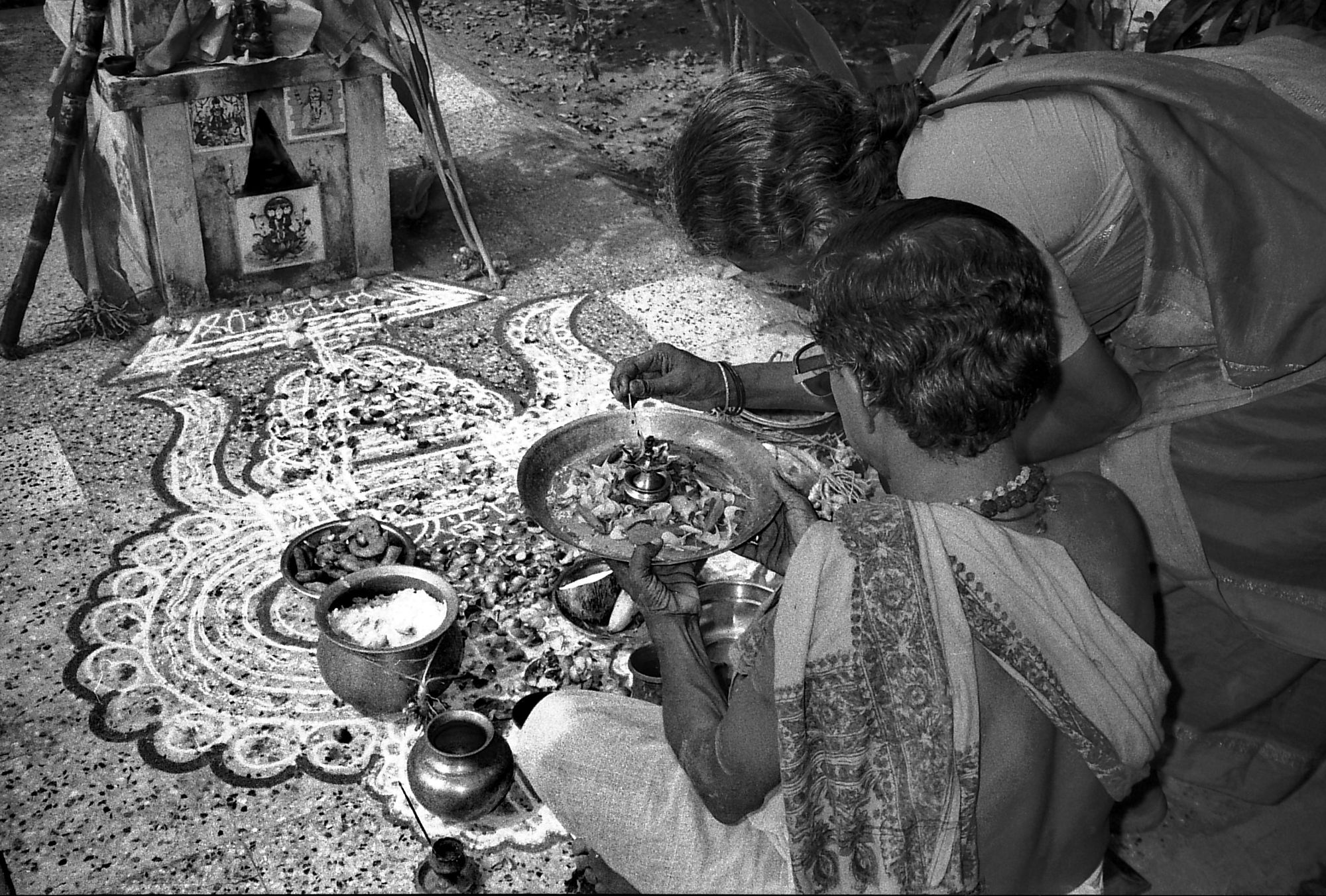
A long time ago when I started immersing in South Indian culture, two words related to the position of a married woman caught my attention by their symbolic contents. I first learned the word pativrata (pati means husband, and vrata, a vow) which describes a woman who worships her husband as God himself and remains loyal even if he becomes blind, diseased, poor, or impotent.
Learning Kathakali in Kerala and mostly female roles, I met five illustrious Pativrata, namely, Ahalya, Draupadi, Sita, Tara, and Mandodari. The lines that I personated enlightened me on the various concepts attached to this status. The second word was sumankali, the auspicious and dutiful married woman. Subhadra whom I met in Chennai many years back was in my eyes the embodiment of these principles. She and her husband invited me to celebrate Pongal at their home in the suburbs of Chennai.
Starting the daily rituals with kolam
The first morning, I watch how carefully and precisely she draws various designs in the kitchen. In fact, they are many of them, different in size and style. Next to the place where she stores the vessels, there is an empty space with colourful images of gods and goddesses. Facing the place, she sits in silence, grabs a cup filled up with holy ashes known as tiruniru and draws three diagrams for the planet ruling each day of the week.
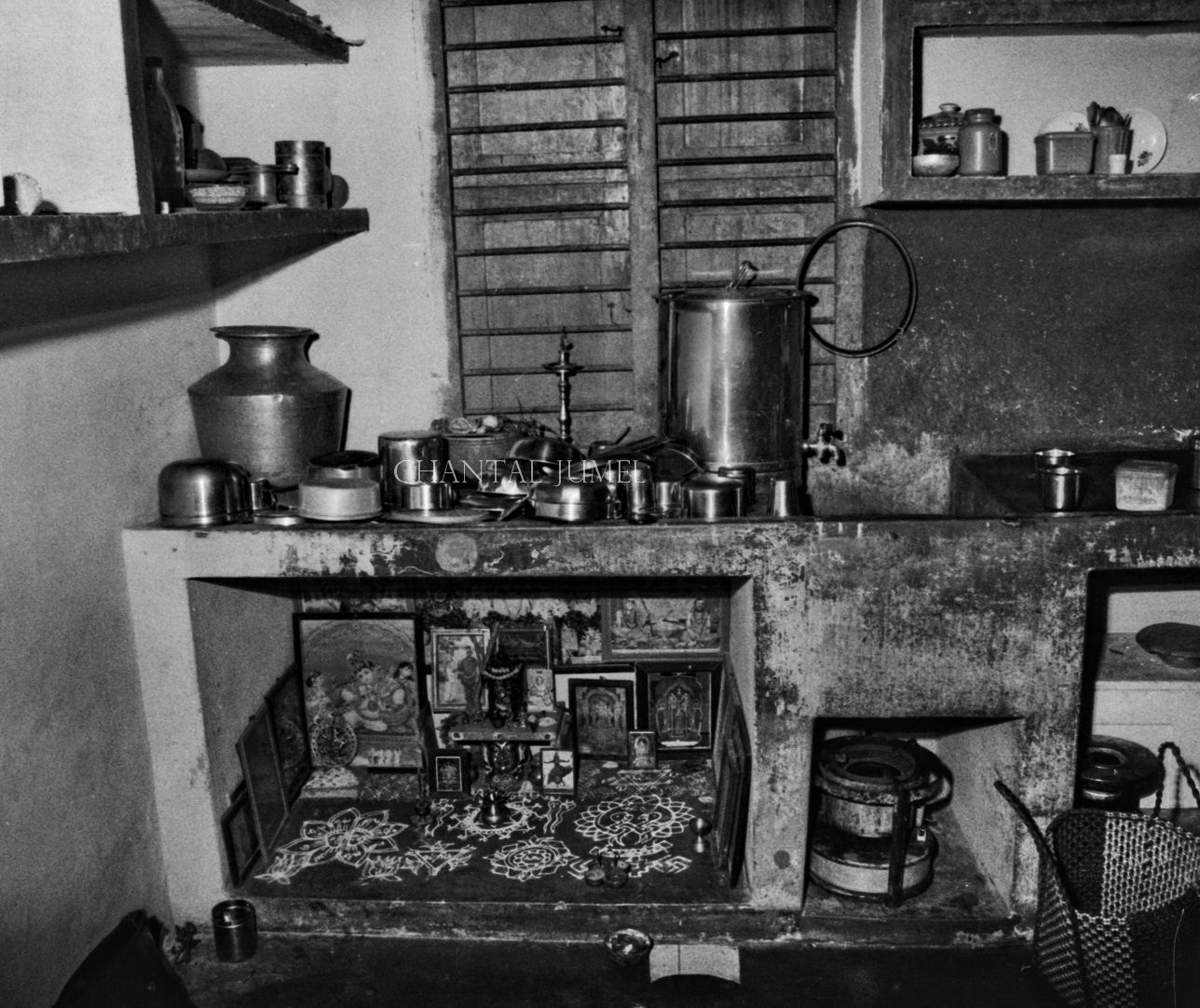

Next to the three planets on the left, hidden under a bronze sculpture of Hanuman, she draws a triangular graph shaped like a tiny mountain with a curled tail arising from the bottom of the figure. She explains to me that it symbolizes the monkey-God Hanuman and his quest for the healing herbs that cured Rama’s brother Lakshmana wounded on the battlefield. In a home, its magical presence is to prevent diseases and death to manifest.
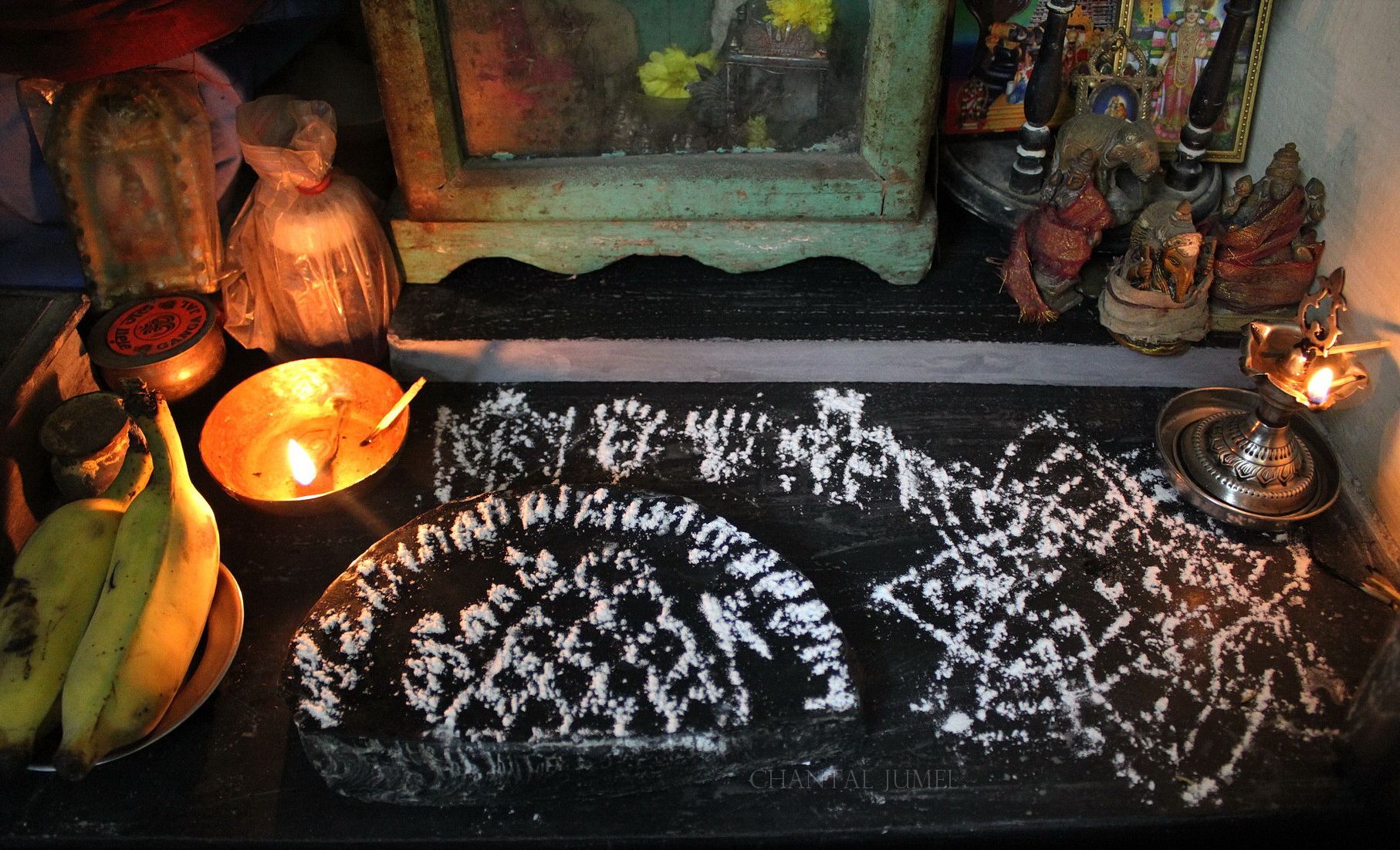
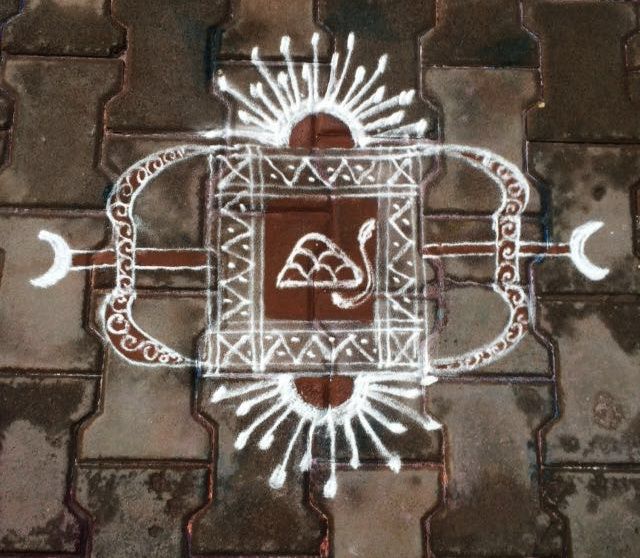
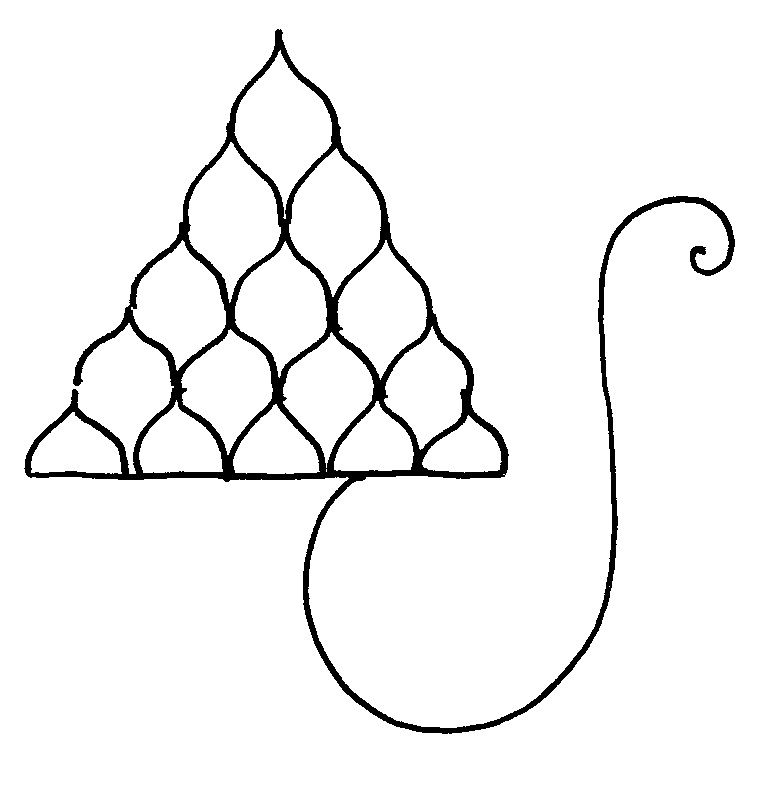
On the right side, two stylized birds with entwined bodies are sitting under a lotus petals canopy. Above their heads, the sun and the moon incarnate husband and wife. As she writes the kolam, she explains that it prevents separation and sufferings in the couple.
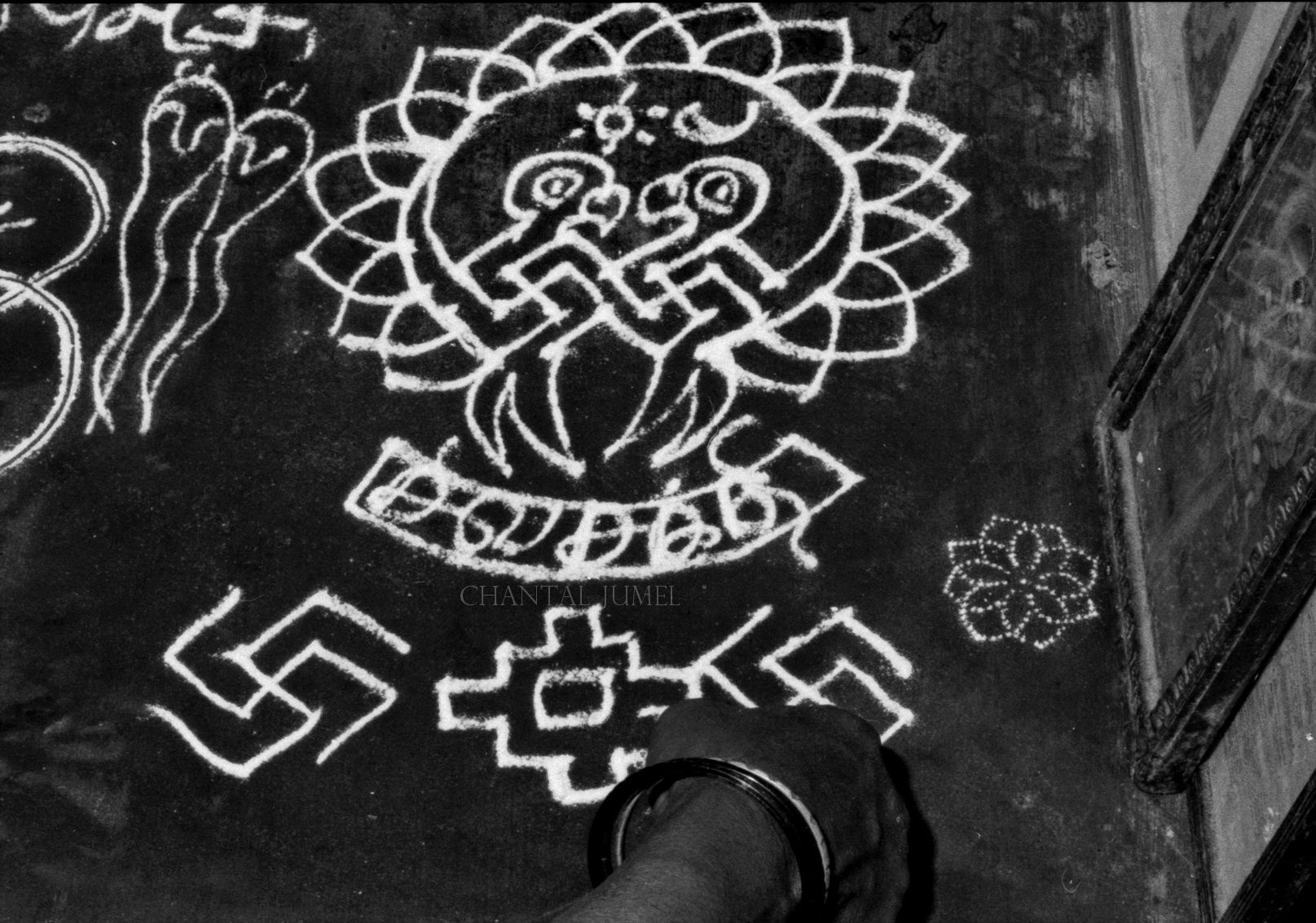
A lotus with eight petals in a circle welcomes two feet dedicated to Râma. Each petal bears a word from the mantra “Jaya, Jaya Râma, Sri Râma, Jaya Râma”. According to her, this kolam is equivalent to the invocation of the divine name. The day continues and it is time to cook the rice. There, in front of the stove, she writes two kolam so that food never runs out in the house.

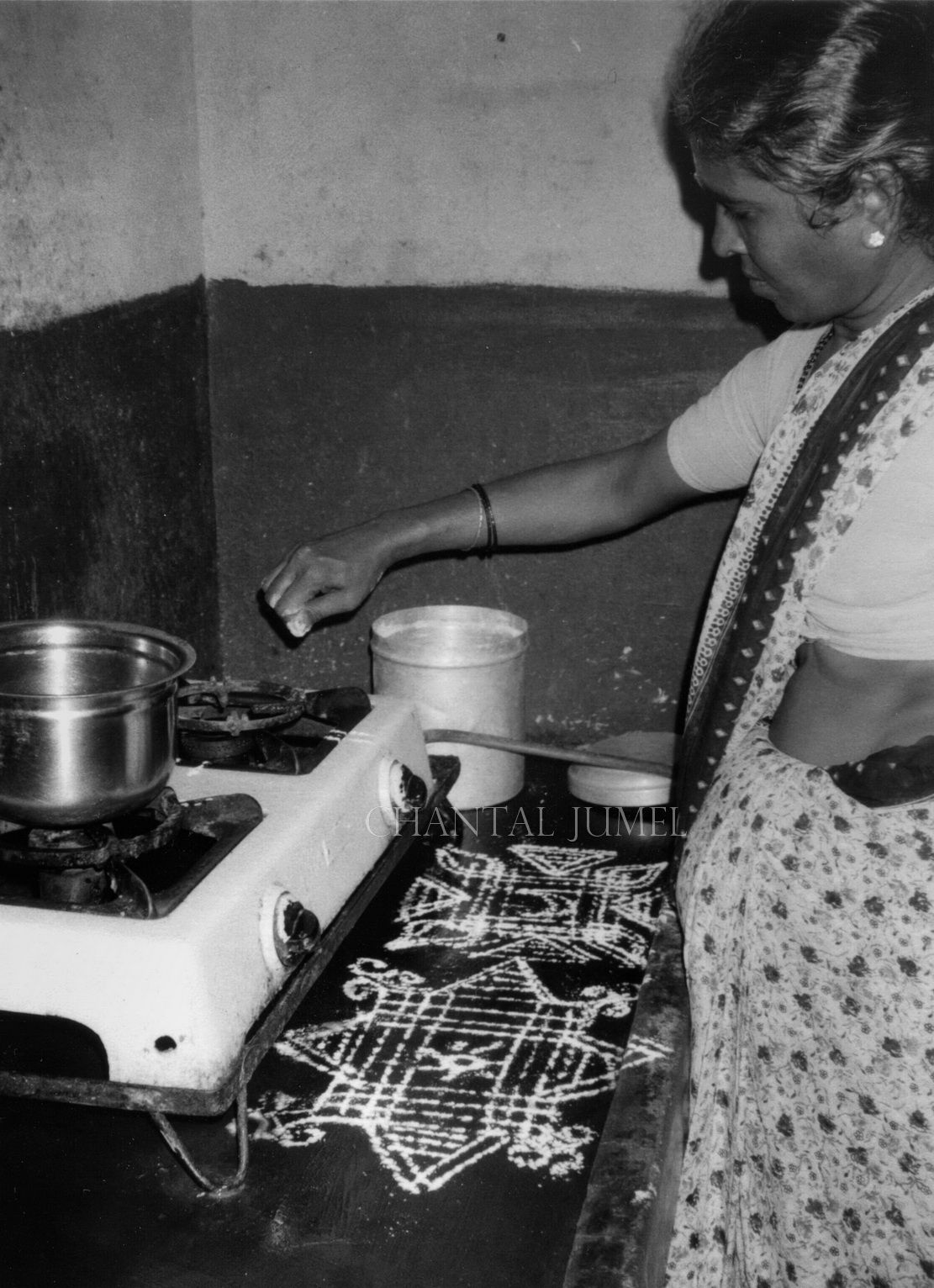
Drawing the kolam for Surya Pongal
On the day of Pongal, the family gets up at five o'clock in the morning. The householder joins a group of friends singing wholeheartedly devotional songs while hopping around the sacred basil. Meanwhile, in the kitchen, Subhadra is busy decorating the pot that will be used for cooking the freshly harvested rice. Smeared with sandalwood paste, she girdles the neck of the container with a turmeric plant. Once the decoration is over, she poured rice into milk and let it simmer on low heat until it boils over.
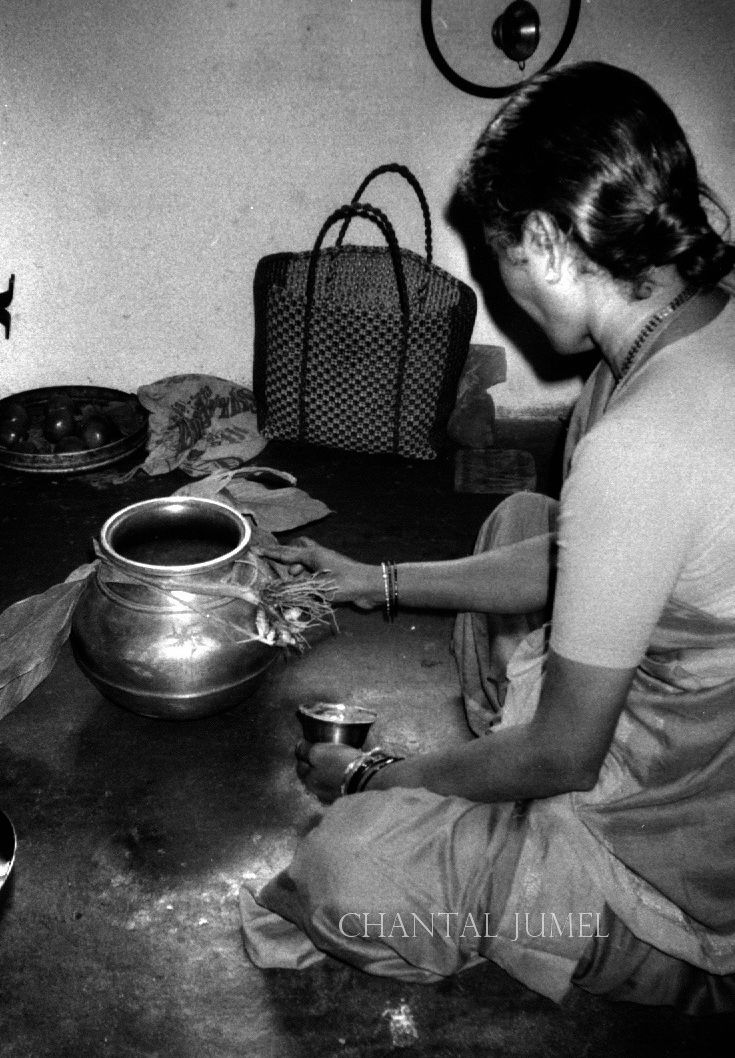
Throughout the cooking, she returns to the courtyard and draws a sun chariot kolam on which the rice container, and all the required offerings for the sun worship ritual shall be placed. Sugarcane stalks and whole turmeric plants adorn the sacred basil planter. The cooking ends when the rice boils and overflows to exultant cries of "Pongalo Pongal" of the whole family.
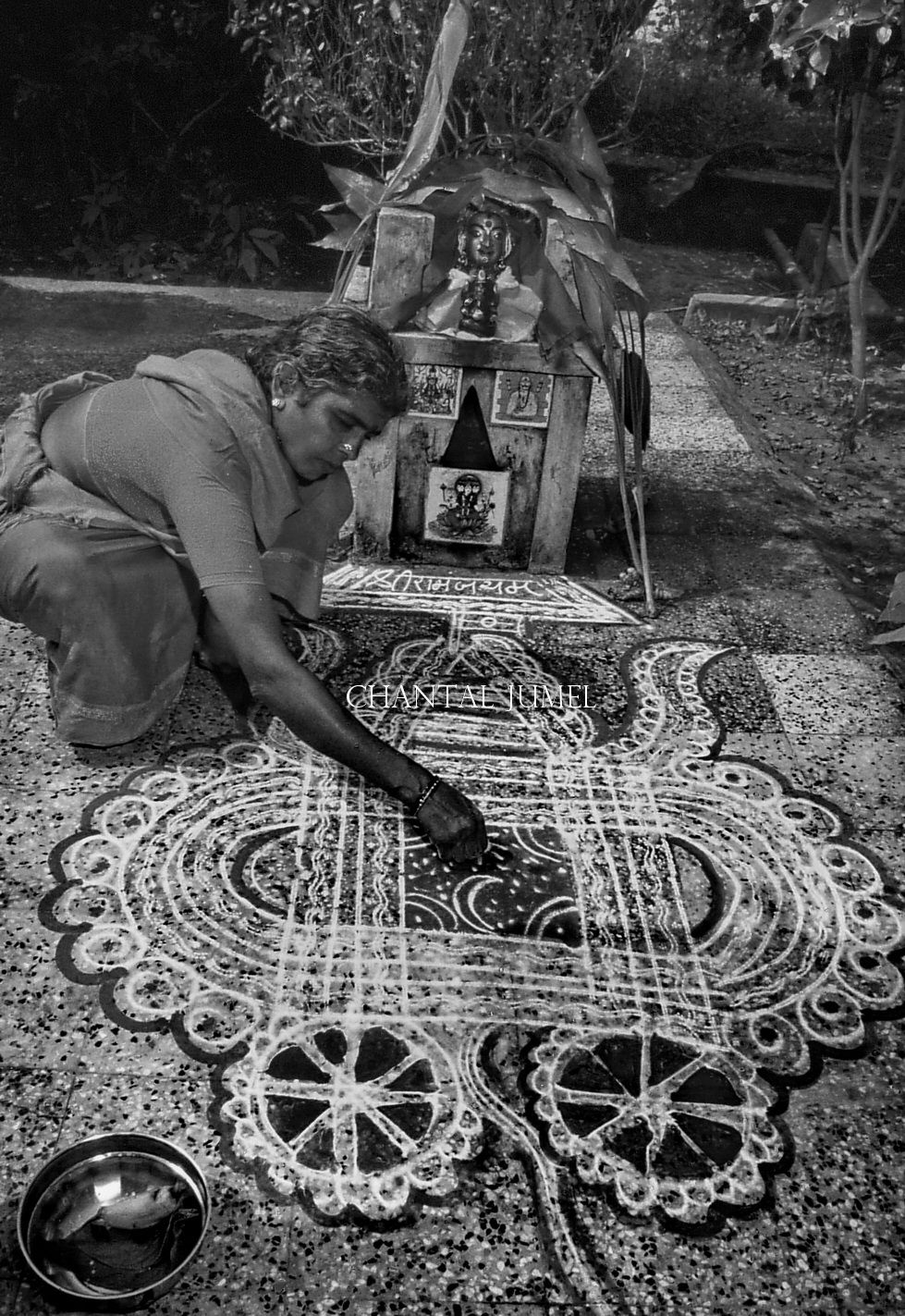
After the appropriate prayers and songs, the ceremony ends with the distribution of the rice in which the hostess will have previously slipped a piece of five rupees so that the one who finds it will know prosperity for the coming year. At the time of serving the sweet rice, I had the surprise of finding the gift of a brand new five rupees coin that I cherish to this day.
